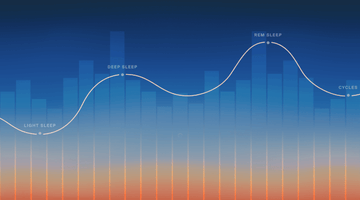Want to know how to bulk and cut? Read this helpful guide to get the right bulking and cutting cycle in place.

If you're ready to take your muscle-building regime to the next level, then it may be time to introduce a bulk and cut cycle.
This is a hugely popular strategy among bodybuilders and fitness enthusiasts, but you need to get it just right in order to see results. To help you, this guide will take a closer look at the bulking and cutting cycle, and provide you with tips on how to make the most of this technique.
What is bulking and cutting?
This approach involves alternating periods of bulking, where you focus on gaining muscle mass, and cutting, where you reduce body fat while maintaining your hard-earned muscle. This helps you to maximise the gains you make in the gym.
During the bulking phase, you will eat more calories than your body burns, which will provide your muscles with the nutrients they need to grow. You'll also lift heavy weights to stimulate muscle growth.
When you enter the cutting phase, you'll eat fewer calories than you burn to shed body fat while retaining muscle mass. You'll also have to incorporate more cardio into your workouts to help burn off fat.
The result? A physical aesthetic other lifters will be jealous of!
How long does bulking take?
The length of your bulking phase will depend on your goals and your current physique.
If you're new to lifting weights, you can expect to gain muscle quickly, so you may only need to bulk for a few months. However, if you're an experienced lifter, you may need to bulk for a longer period of time to see noticeable gains.
Your bulking period will also be dependent on your current body fat. If you have high body fat, you will probably get better results by limiting your bulk cycle. This will stop you from gaining more fat.
In general, a bulking phase can last anywhere from 4 to 6 months.
How long should you cut for?
The length of your cutting phase depends on how much body fat you need to lose.
As a rule, a cutting phase should last long enough to achieve your desired level of leanness, but not so long that you start losing muscle mass. This is typically around 2-4 months.
Theoretically, this should help you to lose 0.45kg every week, although this will vary hugely from individual to individual. You may need to work out your ideal cutting phase and calorie deficit with trial and error to begin with.
How to bulk and cut
To make the most of the bulking and cutting cycle, you need to pay attention to your nutrition, training, and recovery.
During your bulking, you should aim to eat around 10-20% more than you need to maintain your current body weight. This will give you a weight gain of about 0.25-0.5% each week. If you’re just starting out or are an intermediate bodybuilder, you will probably need more calories than if you’re experienced.
A particular focus needs to be placed on protein-rich foods. These should be spread throughout the day with a source of protein eaten around one or two hours before and after you work out. You should also ensure you have enough essential and branched chain amino acids. These play a key role in muscle protein synthesis, which needs to happen if your muscles are to grow.
You should also lift heavy weights during this period to stimulate muscle growth. Aim to hit every body part twice during a week’s workout regime.
During your cut, you should aim to eat a calorie deficit of around 500 calories per day. However, this will depend on your body type, activity levels and genetics. While cutting, make sure you continue to eat enough protein and amino acids to protect your muscle mass. Our RECOVERY drink is ideal for providing these key amino acids to protect your muscle mass as you cut.
The best cutting cycle will also incorporate more cardio to help burn off fat. Adding some high-intensity interval training (HIIT) into your routine could be a great way to do this.
Remember, sleep and recovery are crucial for both stages to avoid injury and maintain muscle.
If you are making big changes to your diet, speak to a healthcare professional to ensure optimum health.
READ MORE: Find out more about rest here.
ENJOYED THIS ARTICLE?
Sources
https://www.ncbi.nlm.nih.gov/pmc/articles/PMC6680710/
https://www.healthline.com/nutrition/bulking#basics
https://jamanetwork.com/journals/jama/article-abstract/2684600
https://www.healthline.com/nutrition/bodybuilding-meal-plan





